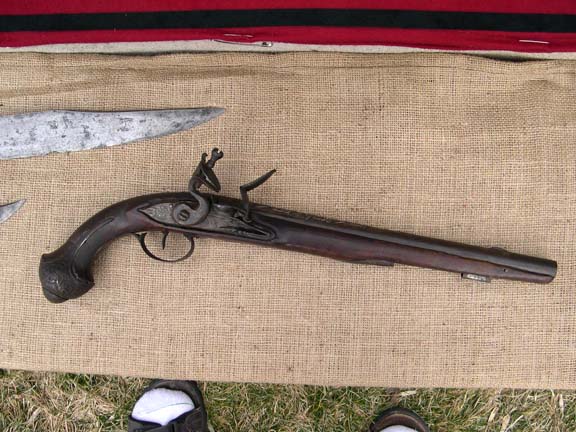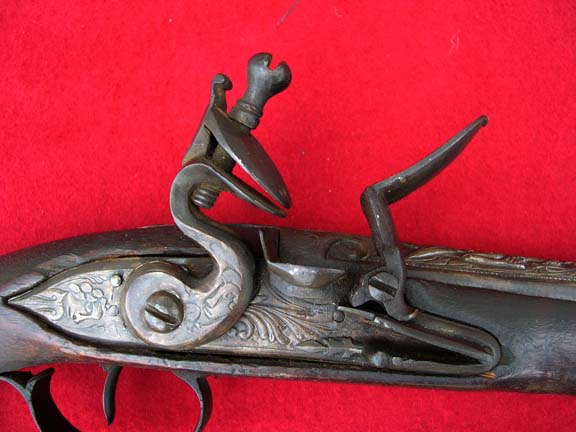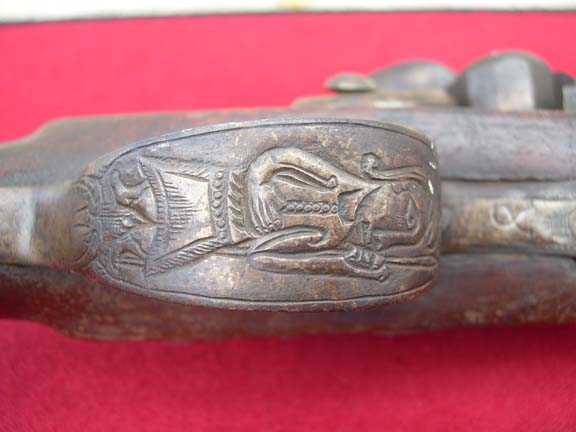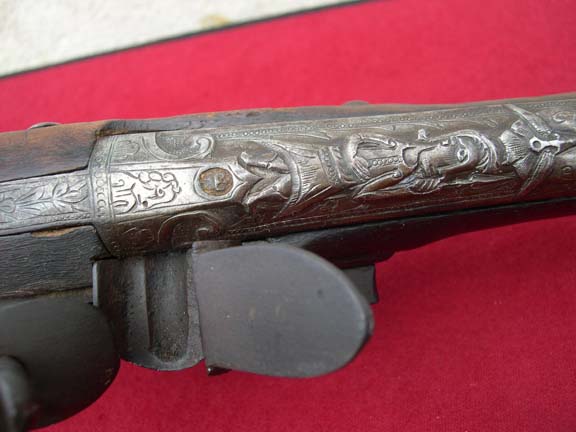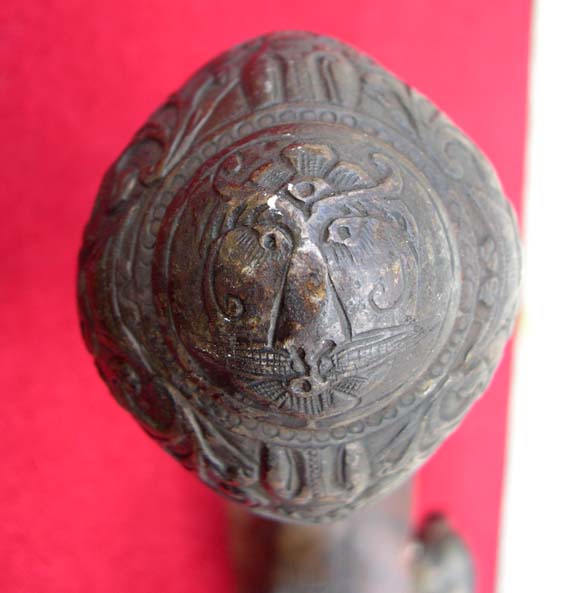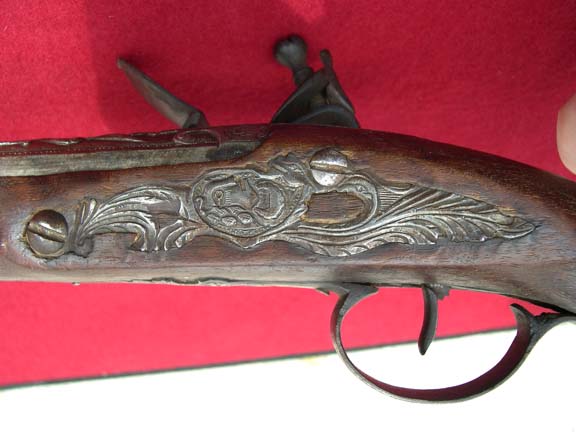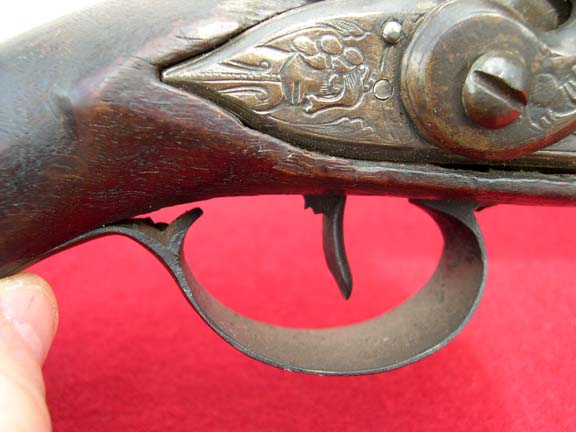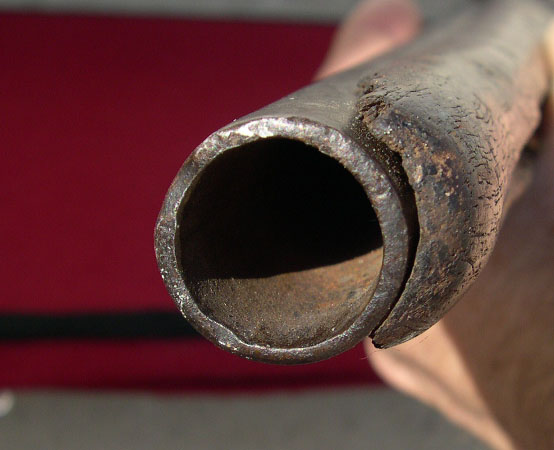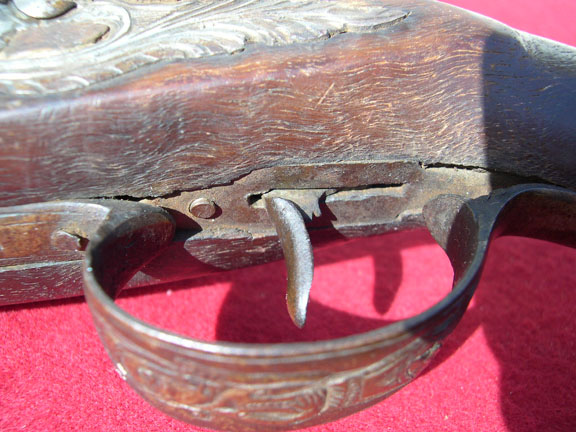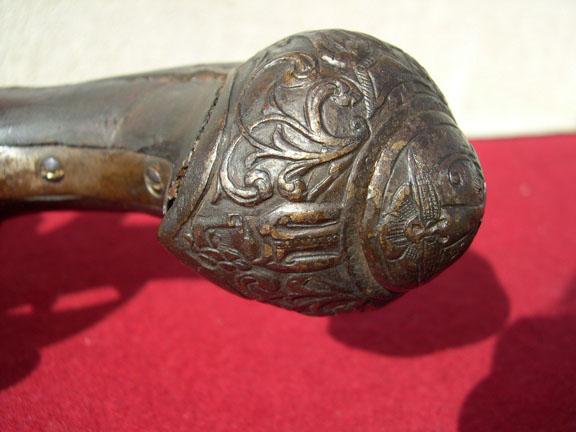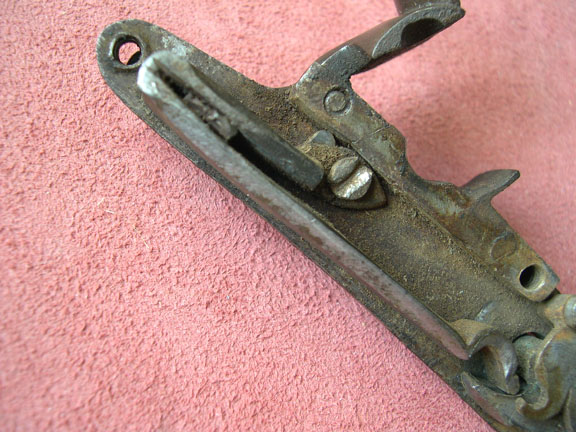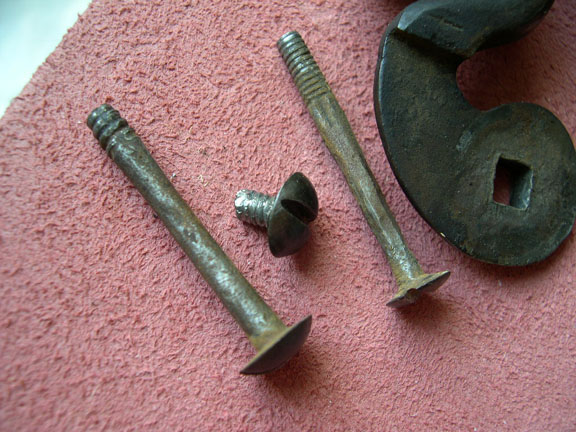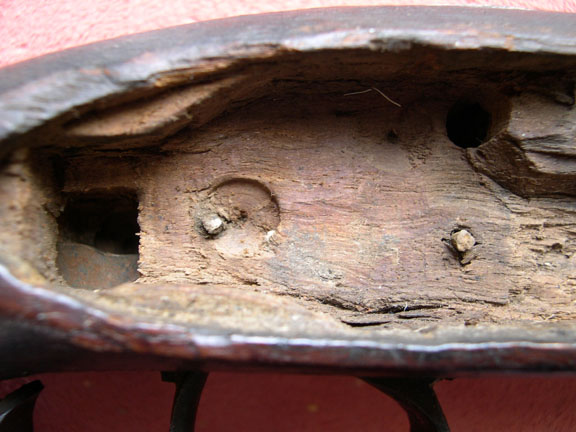Posts: 8
Sat 14 Mar, 2009 8:12 pm
Wierd Flintlock Pistol
Posts: 77
Sun 15 Mar, 2009 8:24 am
Is the pistol in your possession? If so, the first thing I do with a piece like that is take it apart and look for makers marks/dates. If you don't feel confident doing so, find an expert. Without handling the piece I would say it was German or english ca. 1760-75. Maybe earlier. The relief carving on the barrel suggests earlier rather than later. I might also suggest that it is a restock because the plain wood stock is a little out of place with the ornate metal parts. Nice gun, I bet it has an interesting story to tell.
Posts: 1,241 Location: NC
Sun 15 Mar, 2009 12:50 pm
| Jason Mather wrote: |
| Is the pistol in your possession? If so, the first thing I do with a piece like that is take it apart and look for makers marks/dates. If you don't feel confident doing so, find an expert. Without handling the piece I would say it was German or english ca. 1760-75. Maybe earlier. The relief carving on the barrel suggests earlier rather than later. I might also suggest that it is a restock because the plain wood stock is a little out of place with the ornate metal parts. Nice gun, I bet it has an interesting story to tell. |
I am going to disagree with German or English origin, based on the chisel work. I have never seen anything like that on either English or German handguns. I am leaning more toward the Ottoman Empire or Russia. Certainly the finer Italian and French pieces have much higher quality chisel work and the designs themselves are more ornate. That is also true for German and English pieces. The stock architecture seems more eastern than western. I might add that while I think the gun is not from Germany, the lock may well be, since it resembles the Germanic style lock found on many American long rifles. It is possible the lock was imported to where ever the gun was made, from Germany. But those carvings on the barrel look like men in caftans to me which was a style of clothing worn in the mid-east and in Russia until very late. Also, very high relief chisel work was frequently done on Russion firearms.
Disassembling the gun, or at least removing the lock, to look for a maker's mark, is probably in order. Removing the barrel will probably not produce any information and may result in damage to the stock since the pins holding the barrel in place may have corroded into the wood. I would not attempt that.
It is also quite possible that this is not a particularly old gun at all. Reproductions of all kinds of firearms were made starting back in the 19th century and are still being made today, as we all know. I have a photo of a very nice lemon butt Scottish pistol that was an early 20th century reproduction. Except for the fact that it is covered with Celtic knotwork, which is seldom found on those pistols, it could be mistaken for an original. A gentleman once asked me to look at a flintlock pistol he had that he thought was quite old. So did I, at first. This pistol had a fairly rare feature in that the face of the frizzen was grooved instead of smooth. I had a photo of an early Italian swivel barrel rifle that had a frizzen just like it. So, I went to the next NC Gun Collectors show with the pistol in tow, expecting to find out it was a rare antique. Instead I found out that it was a reproduction, made some time in the 1950s or 60s then either given some very rough use or artificially aged. The give away was the inside of the lock, which had brand new screws and springs and no rust. The plate was also filed out very roughly, not at all in keeping with what appeared to have been a high quality piece when it was new.
I would like to see a photo of the end of the barrel and the butt cap, if possible.
Posts: 626 Location: Louisiana / Nordrhein-Westholland
Sun 15 Mar, 2009 2:04 pm
Hmm... Yes, I would also go with Eastern manufacture. I'm leaning towards Russian. Any other pictures you might have would be useful. If you will be taking more pictures, look for heraldry, devices, emblems etc. If in the carving there is a picture of a crown or bird or something distinct like that, take a photo.
For example, can you make out what this is:
 Attachment: 40.55 KB
Attachment: 40.55 KB
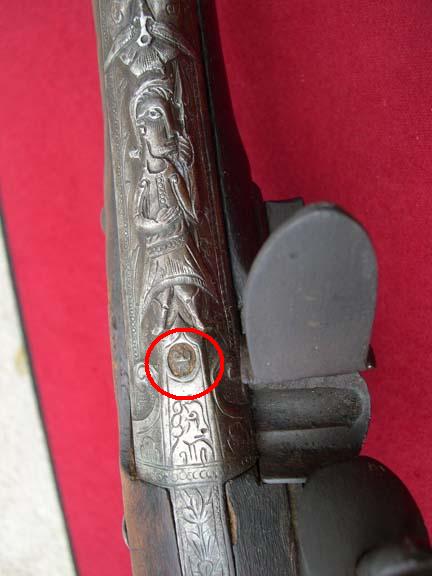
Posts: 1,241 Location: NC
Sun 15 Mar, 2009 2:31 pm
That looks a bit like a crown.
The more I look at these photos, the more I think this is not a very old piece. The frizzen, for example, does not appear to have been struck with a flint at any point, although it could be a replacement. The quality of workmanship on the gun appears to be mediocre at best. I don't know what we are looking at and some detailed photos of any possible identifying marks would be helpful.
Posts: 125
Sun 15 Mar, 2009 3:22 pm
Balkan/Ottoman.
Regards,
Norman.
Last edited by Norman McCormick on Sun 15 Mar, 2009 4:36 pm; edited 2 times in total
Posts: 626 Location: Louisiana / Nordrhein-Westholland
Sun 15 Mar, 2009 3:26 pm
| Norman McCormick wrote: |
Balkan/ Ottoman.
Regards,
Norman. |
Yes, I think Balkan might fit the bill nicely.
Posts: 1,241 Location: NC
Sun 15 Mar, 2009 4:03 pm
| Ian Hutchison wrote: |
| Norman McCormick wrote: | Balkan/ Ottoman.
Regards,
Norman. |
Yes, I think Balkan might fit the bill nicely. |
Ditto...Ottoman was one of my first impressions.
Posts: 1,435 Location: California, Maryland, USA
Mon 16 Mar, 2009 8:52 am
It's an interesting piece to say the least.
M.
Posts: 135 Location: Alberta, canada
Tue 17 Mar, 2009 7:27 am
I'd also agree with Norman,...Balkan/Ottoman.....many Turkish pistols have this stock architecture.
The stock shape gives it away as being eastern or up into Russia, but this only applies if it is old.
Richard.
Posts: 8
Tue 17 Mar, 2009 9:42 am
Wierd Flintlock Pistol
Posts: 404 Location: Oxford, England
Tue 17 Mar, 2009 12:40 pm
Good day,
I have seen many of these for sale in Eastern Europe and they sell by the bucket in Turkey. Yours looks to be late 19th early 20th century, the more modern ones have slightly poorer castings and sometimes have a metal flint. In a Bazaar in Turkey I saw some people making these, they literally would stick the guns in barrels of earth and termites to give termite damage, and would chemically age the metal fittings. Some key things that point to yours being slightly earlier 19th early 20th cent. are: the metal appears to have some natural age and wear, no artificial termite damage, no file marks. These sell in Europe for about 60 euro, sometimes up to 1000 dollars in the US (but that's generally because of an unscrupulous sales person). The butt plate and overall shape really looks like these Eastern European copies.
Best
Hadrian
Posts: 8
Tue 17 Mar, 2009 3:57 pm
Wierd Flintlock
Posts: 1,241 Location: NC
Tue 17 Mar, 2009 4:47 pm
| Hadrian Coffin wrote: |
Good day,
I have seen many of these for sale in Eastern Europe and they sell by the bucket in Turkey. Yours looks to be late 19th early 20th century, the more modern ones have slightly poorer castings and sometimes have a metal flint. In a Bazaar in Turkey I saw some people making these, they literally would stick the guns in barrels of earth and termites to give termite damage, and would chemically age the metal fittings. Some key things that point to yours being slightly earlier 19th early 20th cent. are: the metal appears to have some natural age and wear, no artificial termite damage, no file marks. These sell in Europe for about 60 euro, sometimes up to 1000 dollars in the US (but that's generally because of an unscrupulous sales person). The butt plate and overall shape really looks like these Eastern European copies.
Best
Hadrian |
Well how about that! Thanks for the information.
Posts: 8
Tue 17 Mar, 2009 4:52 pm
More Images disassembled
Posts: 1,241 Location: NC
Tue 17 Mar, 2009 7:17 pm
Jeff...
Sorry to say it, but the photos of the muzzle, lock mortice and internal workings of the lock convinced me that Hadrian's comments are correct. This is a very crudely made piece, almost certainly from more recent times. In fact I feel pretty sure that it is 20th century. The lock mortice has been hogged out and the screws and springs of the lock can only be described as poorly made. That the lock has a bridle is interesting but it also makes me think that the makers simply copied an existing lock without even knowing the purpose of the bridle.
Too bad, but these things are out there - I have seen one myself, as I commented earlier - and will be mis-represented from time to time. Hang it on the wall, where it will make a good conversation piece.
You
cannot post new topics in this forum
You
cannot reply to topics in this forum
You
cannot edit your posts in this forum
You
cannot delete your posts in this forum
You
cannot vote in polls in this forum
You
cannot attach files in this forum
You
can download files in this forum
